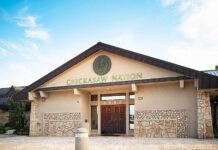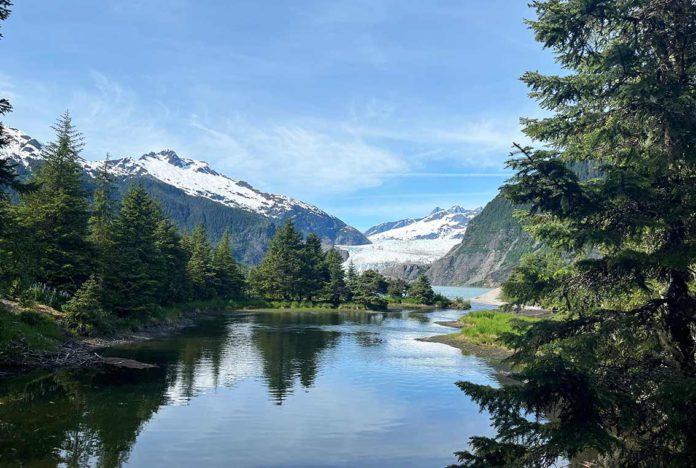WASHINGTON, D.C. – The Department of the Interior advanced two actions that maintain protections on Bureau of Land Management (BLM)-managed public lands in Alaska that are home to key fish and wildlife habitat, sensitive rivers and streams, and other resources that are critical to the state’s subsistence economy and the way of life for Alaska Native communities.
The steps build on the Biden-Harris administration’s actions to conserve millions of acres of lands and waters in Alaska, including implementing maximum protections for more than 13 million acres of Special Areas in the western Arctic and protecting approximately 2.8 million acres of the Beaufort Sea to place the entire United States Arctic Ocean off limits to new oil and gas leasing. President Biden is on track to conserve more lands and waters than any President in history.
“The Department of the Interior takes seriously our obligations to manage America’s public lands for the benefit of all people,” said Secretary of the Interior Deb Haaland. “In Alaska, that includes ensuring that we consider the impacts of proposed actions on Alaska Native and rural subsistence users. Guided by feedback from tribal nations, Native corporations and the best-available science, the steps we are taking today ensure these important areas remain intact for generations to come.”
Rejecting the Proposed Ambler Road
The Department also released the Record of Decision (ROD) for the proposed Ambler Road project, selecting the No Action Alternative from the April 2024 Ambler Road Final Supplemental Environmental Impact Statement (EIS). The decision means that the Alaska Industrial Development and Export Authority (AIDEA) will not have a right-of-way across BLM-managed lands. The ROD completes the Supplemental EIS process and requirements for consideration of AIDEA’s application.
There are no active mines in the area and no mine plan proposals pending before the federal government.
The proposed Ambler Road would have traversed 211 miles of significant wildlife habitat and pristine waters that are vital for the subsistence activities of tribal communities along the iconic Brooks Range in north central Alaska. The BLM’s analysis found that the road would have required over 3,000 stream crossings and would have impacted at risk wildlife populations, including sheefish and the already-declining Western Arctic caribou herd, which are critical food sources for Native communities. The analysis also found that the road would have reduced the abundance and availability of subsistence resources while also restricting access to them. In addition, the analysis showed that irreparable impacts to permafrost would make it unlikely the road could be reclaimed, and that it is reasonably foreseeable that the industrial road would be used by the public, increasing impacts to the surrounding environment and communities.
The BLM prepared the supplemental EIS to address deficiencies identified in the 2020 analysis that resulted in a remand from the federal district court. The new analysis evaluated the same range of alternatives and routes as the 2020 EIS, but more thoroughly analyzed potential impacts to resources, including subsistence impacts under Section 810 of the Alaska National Interest Lands Conservation Act (ANILCA). The ANILCA 810 analysis found that more than 60 Alaska Native communities would experience restrictions on their subsistence and, of those, more than 30 would experience significant restriction of subsistence uses should the road be constructed. The BLM is unable to make the determinations required by ANILCA Section 810(a)(3) that the significant restriction of subsistence use in at least 30 communities is necessary, consistent with sound management principles for the utilization of the public lands, for AIDEA’s proposed route or any of the other action alternatives. Therefore, ANILCA precludes the BLM from granting or maintaining the right-of-way across BLM-managed lands under any of the action alternatives.
The BLM began the supplemental process in May 2022, holding 21 tribal and 16 Alaska Native corporation consultations. A draft EIS was released in October 2023 on which the BLM requested comments and held 12 public meetings and ANILCA 810 subsistence hearings in communities within the vicinity of the project. During the comment period, nearly 90,000 people offered written comments.
The selection of the “No Action” alternative was informed by public comments and input received, as well as analysis from the Final Supplemental EIS, which found that that each of the other alternatives would significantly and irrevocably impact resources, including important subsistence resources, in ways that cannot be appropriately mitigated.
Reviewing Continued Protections for 28 Million Acres of Public Lands
Additionally, the BLM released a Final Environmental Impact Statement (EIS) analyzing the proposed revocation of existing withdrawals on 28 million acres of BLM-managed public lands across Alaska. The Final EIS identifies “no action” as the preferred alternative, which would retain current protections for these lands and avoid potential impacts to natural and cultural resources from future potential development.
The comprehensive analysis comes in response to the previous administration’s decision in its final days to lift the longstanding withdrawals without sufficient public notice and comment, tribal consultation, or analysis of potential socioeconomic and environmental impacts. This sweeping action would have opened the 28 million acres to extractive development activities, such as mining and oil and gas drilling, and removed the federal subsistence priority from millions of acres. The previous administration’s decision was put on hold to allow full consideration of the potential consequences and ensure adequate engagement with the public and Alaska Native communities.
The BLM’s analysis found that revoking the protections would likely harm subsistence hunting and fishing in communities that would lose federal subsistence priority over some lands, ranging from 44 to 117 communities, depending on the alternative. The analysis also found that lifting some or all of the withdrawals could have lasting negative impacts on wildlife, vegetation and permafrost.
During the public comment period and in 19 community meetings held last winter, the BLM heard overwhelming support for retaining the withdrawals in their current form, which many Alaska Native tribes, corporations and tribal entities have noted are vital to protecting important subsistence hunting opportunities.
The withdrawals, established pursuant to Section 17(d)(1) of the Alaska Native Claims Settlement Act (ANCSA), stretch across the BLM’s Bay, Bering Sea-Western Interior, East Alaska, Kobuk-Seward Peninsula and Ring of Fire planning areas. The BLM analyzed a range of alternatives, including the “no action” alternative that would retain the withdrawals and several action alternatives ranging from partial to full revocation.
The BLM undertook a robust public process to gather input from Alaska Native tribes and corporations, rural and urban communities, and the public on this analysis. In total, the BLM received approximately 15,000 public comments on the draft. A Record of Decision will be signed no sooner than 30 days after the publication of the Final EIS in the Federal Register. This analysis will inform a decision by the Secretary of the Interior.
The lands analyzed in the EIS are already available and would remain available for selection by eligible individuals under the Alaska Native Vietnam-era Veterans Land Allotment Program. In 2022, Secretary Haaland partially revoked the withdrawals on these lands to allow for land selection by Alaska Native Vietnam-era veterans, making an additional 27 million acres available to the approximately 1,900 veterans eligible to select their 160-acre land entitlement under the Dingell Act, and has been followed by the Secretary making an additional 812,000 acres available last summer.














































